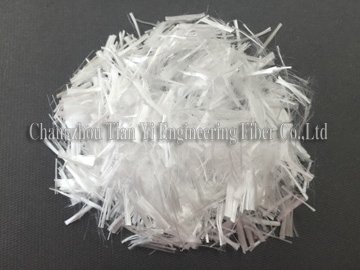Overview of polyvinyl alcohol fiber
Polyvinyl alcohol fiber is a polyvinyl alcohol is dissolved in water, synthetic fibers by dry spinning or wet spinning steel. Polyvinyl alcohol fiber treated with formaldehyde fibers made of polyvinyl formal, commonly known as vinylon, China's trade name PVA.
Polyvinyl alcohol was first used by the German P.H. Haenel and Herman synthesized in 1924, 30 years Germany made fibers, called Jin Tuo Feier (syntho-fil). Because it was dissolved in water and not as a textile fiber, mainly used for surgical suture surgery. Until the Japanese cherry Ichiro, who studied the heat treatment and the success of polyvinyl acetal method 1939, it became a hot water resistance good fiber. National production of polyvinyl alcohol fibers in the world are China, Japan, Korea, the Soviet Union and other products with short fiber-based.
PVA nature and is quite similar to cotton, synthetic cotton said. Strength and wear resistance than cotton. It cotton blends (1: 1) fabric 0.5-1 times higher than the cotton fabric durability. Good moisture absorption, moisture regain in the standard state of 4.5 to 5%; specific gravity (1.26 to 1.30) smaller than cotton, low thermal conductivity, warm and good; corrosion resistance and good resistance to sunlight, in general organic acids, alcohols, esters and petroleum solvent which does not dissolve; easy to mold borers, long-term placement in the sea, buried underground or prolonged exposure strength loss is not large in daylight. The main disadvantage of PVA is poor hot water resistance, when significant deformation and shrinkage in the wet state 110 ~ 115 ℃, boiling in water for 3 to 4 hours, the fabric significantly deformed and partially dissolved; poor flexibility in the process of taking Easy crease; poor dyeability, color is not bright; low mechanical properties at high temperatures, limiting its use in automobile tire cord area.
PVA for a large number of short fibers mixed with cotton, viscose fiber or blended with other fibers or pure spin, making □ coat and shirt, cotton sweaters pants, knitted sports Shandeng.
Villeneuve made of canvas and cables due to high strength, light weight, abrasion resistance, sunlight, have a broader purpose; PVA also its impact strength and good corrosion resistance to sea water, suitable for making various types of fishing nets ; Because of the stability of various chemicals PVA is preferably used to making clothes or as a variety of packaging materials and filter materials.
Polyvinyl alcohol can not be prepared from the polymer of vinyl alcohol, vinyl alcohol because the free state can not exist alone, generally based on vinyl acetate monomer is polymerized, and then the resulting polyvinyl acetate alcoholysis prepared polyvinyl alcohol. The basic process is spun PVA: Preparation of spinning solution, spinning and post-processing. Wet spinning process as shown above polyvinyl alcohol PVA staple fiber production flow chart shown in Fig.
Concentrated solution in the industry are in water as a solvent made of polyvinyl alcohol and then by filtration, degassing, the solution to remove mechanical impurities and bubbles. Polyvinyl alcohol melting temperature higher than the decomposition temperature, so the only solution spinning process. Multi-wet spinning to spun staple fibers, and dry spinning for spinning the filaments. After the processing of polyvinyl alcohol fibers include drawing, heat setting, acetalized, water washing, oiling and drying processes, and other synthetic fibers only difference is that a multi-acetalization step, i.e., treatment with formaldehyde fibers, hydrophilic macromolecules on the hydroxyl moiety polyvinyl be closed to generate polyvinyl formal. Acetalized fiber before poor hot water resistance, shrinkage in hot water of 80 ~ 90 ℃ 10%. And after acetalization shrinkage under the same conditions does not exceed 2%.
- 2016-05-18> 关于新厂房搬迁的通知
- 2016-04-28> What is the wall clothing fibers?
- 2016-04-28> Overview of construction steps of fiber wall cloth
- 2016-04-11> Overview of polyvinyl alcohol fiber
- 2016-01-14> Classification of polypropylene monofilament fiber
- 2015-12-17> Overview of the history of polypropylene fibers
- 2015-11-05> Overview of the performance characteristics of pol











